One of the most common, yet seriously diverse Thanksgiving sides, a classic Thanksgiving stuffing is like a super savory bread pudding when done right. This recipe is not only a how-to on making a Thanksgiving stuffing or dressing, but also a basic and classic recipe for a simple yet flavorful version of this side dish that cannot be skipped. Is it really a Thanksgiving meal without stuffing?
Not going to lie, I was never a fan of stuffing or dressing when I was younger. No idea why. When I actually looked at how it’s made, I figured… there’s literally nothing in this I wouldn’t eat, so I tried it. So, so good, and goes with the turkey so well. Nowadays, I’m definitely a stuffing guy.
While this is a recipe for a classic Thanksgiving stuffing, I’m also going to be discussing a lot of options on how to make this side dish. The basic recipe usually involves some dry bread, veggies, herbs, usually some eggs, and a liquid. Yet from that vague base, there are SO many options for every single aspect of this dish.
If you’re just looking for a basic and classic version of Thanksgiving stuffing, feel free to scroll straight to the recipe below, but if you’d like to know more about what sort of bread (or not bread!) options you should consider, or whether fresh herbs are necessary, or how to make vegetarian and vegan options, then please read on.
Stuffing Or Dressing?
Before jumping into recipes or what’s best to use for making stuffing, let’s address the age-old question: is it stuffing or dressing? Yes.
But seriously, the terms are interchangeable these days. Technically, stuffing is what it sounds like, a concoction that is cooked by stuffing it inside another vessel and cooking them together. The term goes all the way back to the Roman Empire where they stuffed animals like poultry and pork with a mixture not too far from what we make now.
Calling it dressing didn’t really start until the 1850s with the Victorians of that time. Apparently “stuffing” seemed a vulgar way to describe it. Sometimes still cooked with the animal but displayed around the outside to “dress” the dish. In the United States, the term dressing is mostly used in the South.
At the end of the day, what you call it doesn’t really matter, and is more likely to reflect what your family called it when you were growing up. On the technical side, stuffing is typically cooked within the animal you’re cooking, while dressing is cooked by itself as a standalone side item. Call it what you like though. I usually call it stuffing and 9 times out of 10 I’ll cook it outside of the turkey.

Best Bread (Starch) for Thanksgiving Stuffing
The best breads for stuffing/dressing are typically a slightly dense, tighter crumbed bread without a strong flavor. In other words, white bread and French or Italian loves are great, but avoid things like honey wheat, whole grain, pumpernickel, etc.
Sometimes the best choice of bread will also depend on the style of stuffing you wish to make. Think about the flavors you plan to have in your stuffing, and what type of bread will best complement that. Not only the stuffing, but the overall theme of your meal might come into play also, such as an Italian inspired menu, or a Cajun Thanksgiving, a Southern menu, etc.
Regular white bread is one of the best choices for stuffing overall. It’s a perfect neutral choice that brings all the flavors of the stuffing together without competing with them. Once dried, the tighter crumb works well at absorbing a good amount of liquid without falling apart also.
Some of the best bread options include:
- White Bread
- Challah
- Italian Bakery Bread
- French Bakery Bread
- Brioche
- Corn Bread
Other good options that can be situational or do well mixed with other choices are:
- Sourdough
- Whole Wheat Bread
- Pumpernickel
- Rye Bread
- Jalapeno Cheddar Corn Bread
- Potato Bread
Some people love these breads on their own, but they typically do best when mixed with another option. Personally, I like to mix both white and whole wheat breads in my Sausage and Sage Stuffing.
If you noticed the heading, I also said “best bread (starch)” instead of just bread. Some stuffing recipes don’t use bread at all but can also be great. Instead of bread, they use starches such as rice, wild rice, quinoa, barley, etc. Obviously, these options will cook differently and can’t just be swapped for bread, so be sure to look at specific recipes for rice stuffings.
Finally, most of the time when I dry bread for a stuffing, I slice it into roughly ½-1-inch cubes. If you’re going for a rustic style with an artisanal bread choice though, try tearing it by hand to give it a varying and non-uniform look.
Ingredients for a Classic Thanksgiving Stuffing
A basic, classic stuffing recipe keeps the ingredients simple. I’ll mention options here and there where applicable as well. Be sure to read the section on frequently asked questions also for a lot more information and options.

Bread – As mentioned above, there are a lot of great options for your bread choice, including unseasoned store-bought cubes if you want to save on time. For this recipe I use a little over a pound of white bread, cut into ½” cubes and dried.
Butter – Cook your vegetables in unsalted, melted butter. I use 1 ½ sticks here, or ¾ cup. If you’re looking to go vegan, replace butter with 3-4 tablespoons of a neutral oil.
Vegetables – Use a combination of onion, celery, and garlic. I use about 3 ½ cups of diced onion and 1 ½ cups of diced celery. I had two decently large onions and got that amount from 1 ½ onions and 3-4 celery ribs should work as well. Mince 4-5 cloves of garlic as well.
Herbs – I like a mixture of fresh rosemary, thyme, sage, and flat-leaf parsley. If using dry ingredients you’ll use a lot less, so if the recipe says 1 tablespoon of fresh rosemary, use 1 teaspoon of dry. Alternatively, use poultry seasoning instead, about 3 teaspoons.
Eggs – Eggs provide additional moisture, a custard-like flavor, and give the stuffing structure. I use two large eggs here. If you’re going for vegetarian or vegan, you can omit the eggs and reduce the final cooking time.
Stock/Broth – Use a few cups of low-sodium chicken stock for the liquid. Homemade turkey stock is even better if you have that. If you’re making a vegetarian or vegan version, switch for vegetable broth.
Salt & Pepper – I always add some salt and pepper while cooking the vegetables, and again to the chicken stock before pouring over the bread cubes. How much you’ll want to use is up to personal preference, but also depends on the stock you use. If you use regular chicken stock, cut way back on the salt, whereas low-sodium or no salt added versions will need more.
How to Make a Classic Thanksgiving Stuffing
If making your own bread cubes, preheat your oven to 275°F/135°C.

Cut all your bread into roughly ½-1-inch cubes and arrange on 1-2 baking sheets. Bake for 40-50 minutes, tossing about halfway through, until bread is dry and crispy and slightly browned. Set aside and turn oven up to 350°F/180°C.
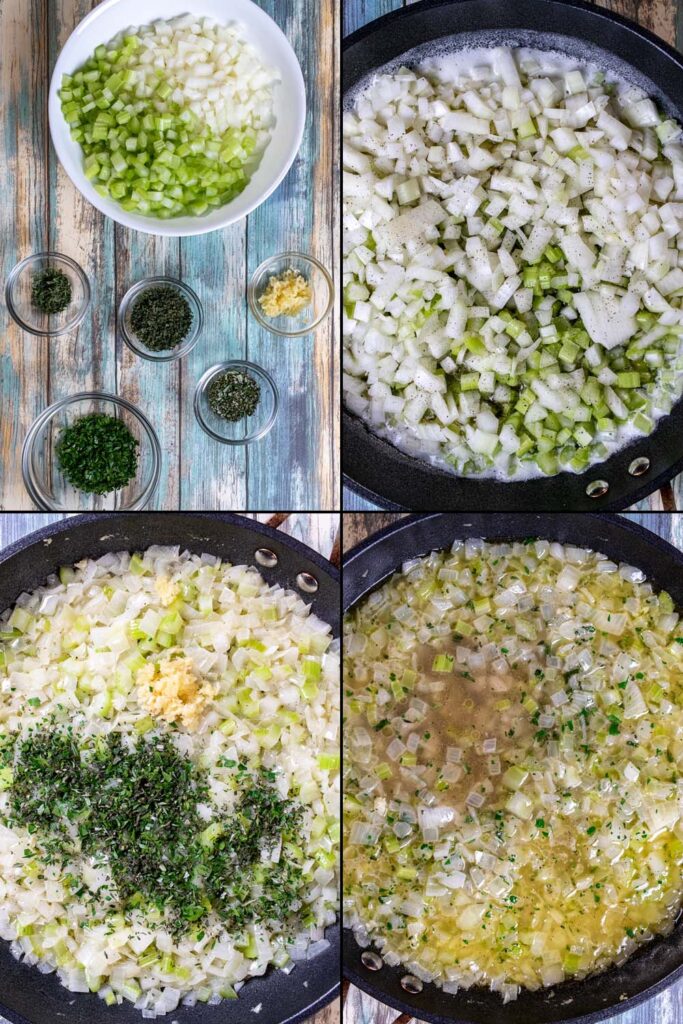
In a large skillet, melt the butter over medium heat. Once melted, and the diced onion and celery, a pinch of salt and pepper, and cook until softened and the onion is translucent but not browned, about 8-10 minutes. Add the minced garlic and herbs/poultry seasoning, reserving about 2 tablespoons of fresh herbs if using. Stir to combine and continue cooking about a minute more. Add about 1 cup of the chicken stock, salt and pepper, and stir to combine the ingredients. Taste and adjust the salt and pepper to your taste here, before you add the raw eggs.
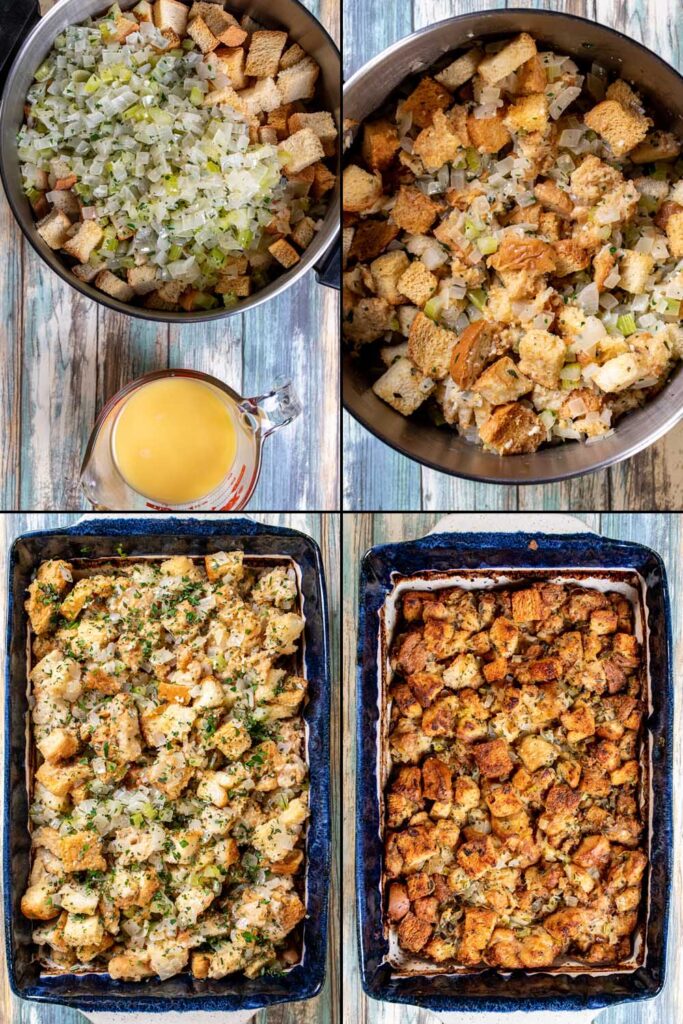
In a large measuring glass or mixing bowl, lightly beat the eggs and combine with the remaining 1 ½ cups of chicken stock. Transfer the bread cubes into a large mixing bowl or pot, pour the vegetable mixture over top and stir to combine. Pour the egg and stock mixture over top as well, and gently fold everything together. Let sit for 5-10 minutes so that everything has time to soak up the flavors and liquid.
Prepare a 13×9 baking dish by buttering the bottom and sides or use a cooking spray. Gently transfer all the stuffing mixture into the dish and pour any remaining liquid over the top. Sprinkle half of the reserved fresh herbs over the top of the stuffing, cover with foil, and bake for 30-35 minutes. Uncover and bake an additional 20-25 minutes to reduce more of the liquid and brown the top. The total cooking time is usually around 45-55 minutes, depending on your preference. If you like a wetter stuffing, cook covered for longer. If you like a slightly drier and well browned stuffing, increase the time spent uncovered. Whichever way you prefer it, it should be cooked to right about 160°F before removing from the oven and resting.
Once cooked to your preference, remove from the oven, top with the remaining reserved fresh herbs and let rest at least 10 minutes before serving.
Frequently Asked Questions on Stuffing
Here’s a few answers to some of the most commonly asked questions when it comes to making stuffing or dressing.
Drying Vs Staling
Although some recipes will use these terms almost interchangeably, they are two different methods with different results. Drying your bread by heating it will evaporate the moisture in the bread while leaving the basic structure unchanged. Staling your bread by leaving it sitting out overnight however, allows the moisture to move from the starch in the bread into the crumb and the starch then recrystallizes. This is what causes staled bread to taste chewy and leathery.
While I’ve done the latter when making French toast, I find drying the bread cubes a much better choice when it comes to making stuffing. Simply cut all the bread you plan on using and bake it in the oven at a low temperature, like 275°F, until it feels dry and slightly colored, like a crouton.

Store-Bought Bread Cubes
There’s nothing wrong with buying premade bread cubes at the store. It’s a great time saver for the holidays. There are, however, three issues that come with buying them already made. One, you’re stuck with whatever bread the manufacturer or store chose to use, and there’s not really a lot of options out there besides white bread or corn bread. Two, unless you find unseasoned versions, you’re also stuck with the seasoning blend they chose to add to the bread cubes. While you can always add more of your own, it’s hard to gauge how to tweak it unless you’re already familiar with that brand and the amount of, or lack thereof, in the seasoning department.
Finally, the last issue can be the price. Companies don’t do all the hard work for you for free, and while bags of stuffing aren’t really expensive, they can cost a lot more than some cheap loaves of bread. One bag might not be enough for your recipe either and now you’re spending a lot more money just on the bread.
Fresh Herbs Required?
You absolutely do NOT have to use fresh herbs in stuffing. Are they worth using? In my opinion, yes, the flavor herbs add when fresh is much stronger and more flavorful than dried herbs or poultry seasoning.

When making stuffing, you basically have 4 options: use all fresh, use all dry, use poultry seasoning, or use a mixture. If you already have dried herbs and don’t feel like buying a bunch of fresh herbs, that’s understandable. I would suggest grabbing some fresh parsley though and mixing that with dried herbs.
The typical mixture of herbs includes rosemary, thyme, sage, and parsley (flat leaf). Instead of buying all of them individually, a lot of stores also sell an option called “poultry herb blend” or a similar name. These usually contain rosemary, thyme, and sage all together and have just enough for a typical recipe.
The other option is poultry seasoning. It’s basically a dry herb blend that’s been turning into a powdered seasoning. Typically, it’s made with thyme, sage, marjoram, rosemary, black pepper, and nutmeg. It’s a very popular option, but again I would recommend mixing that with at least some fresh parsley.
Do You Have to Use Eggs?
Most recipes for stuffing typically include a few eggs. This is what gives stuffing a custardy flavor and helps with its structure. You do not have to use eggs, however. If you don’t like eggs, or you’re going for a vegetarian or vegan stuffing, or you just don’t like that custardy, bread pudding like flavor in stuffing, you can omit them altogether.
Leaving eggs out does slightly change the overall structure of stuffing though, and you’ll need to adjust the cooking time. Typically, without eggs, you can shave off around 20-30 minutes of the cooking time, depending on the oven temperature of the recipe you use.
Popular Mix-Ins
While a typical stuffing recipe includes bread, onion, celery, herbs/seasoning, eggs, and broth, there are also a lot of other possible ingredients you may consider adding.
The single most popular addition to most stuffing recipes is sausage, though other meats can also be used. Not counting meats though, there are a lot of other popular additions people like, usually nuts or fruits.
This isn’t an exhaustive list, but here’s a good idea of popular additions:
Dried Fruits – Raisins, cranberries, cherries, apricots, figs
Fresh Fruits – Apple, pear, cranberries
Vegetables – Mushrooms, fennel, caramelized onion, shallots, carrots
Nuts – Pecans, almonds, walnuts, pistachios, pine nuts

Cooking Inside or Outside of a Turkey
Some people will swear by cooking stuffing inside the turkey and that it gives the stuffing a better flavor because of the drippings. Anecdotal claims also say that that’s how they always cooked their stuffing, and no one ever got sick or died because of it. That’s how my own grandparents cooked their stuffing back in the day as well. Personally, I don’t find it worth the effort, and unless you’re cooking a huge turkey, you’ll never cram a full 13×9 baking dish worth of stuffing into a turkey cavity.
Here’s the main issue with cooking stuffing inside the bird: even if you cook the stuffing ahead of time, raw turkey juices will drip in and contaminate it, so the stuffing must reach 165°F to be considered safe to eat. Adding stuffing to the turkey helps to shield the breast meat from the inside, keeping moisture intact, which is good, but it also means the turkey will take slightly longer to cook and the stuffing is being shielded from the heat even more. By the time the turkey is done, the stuffing might need a lot more cooking time, and by the time the stuffing is done, the turkey may be overcooked and dry.
If you really want to cook the stuffing inside the turkey, its best to bring the stuffing to a high temperature before adding it. Line the body cavity with cheesecloth and add your stuffing but don’t pack it in too densely. Now remove the cheesecloth and stuffing and microwave it until it reaches about 180°F and place it back inside the turkey. This ensures that the stuffing will reach and maintain a safe temperature while cooking the turkey. The cheesecloth is semi-permeable so that you’ll still get the dripping flavors while making it easy to remove after cooking.
While this should be a foolproof way to cook stuffing inside the turkey, you do so at your own risk. One last thing about cooking stuffing inside your turkey: stuff the turkey immediately before cooking. Never stuff the bird the night before or early in the morning, only right before you place it into the oven.
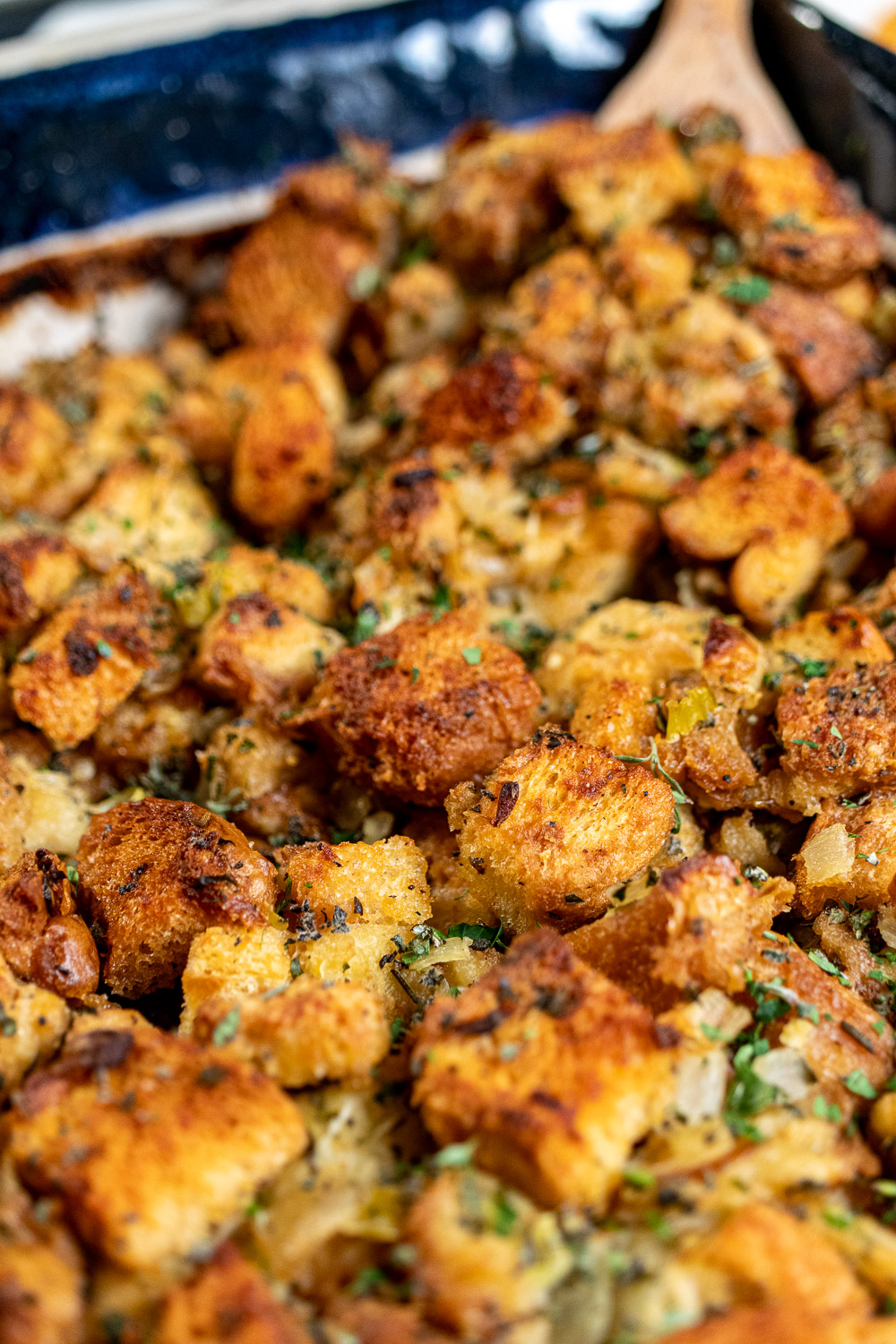
Making Classic Thanksgiving Stuffing Ahead of Time & Storage
Once cooked and cooled, stuffing can be refrigerated for up to 3-4 days.
For longer storage or making it well ahead of time, stuffing can also be frozen either cooked or uncooked for about 3-6 months. However, I would only freeze for 1-2 months for best flavor as the flavors and textures will begin to degrade after the first month or two.
If you plan on making stuffing ahead of time for Thanksgiving, you have a few options. As stated above, once cooked, stuffing can be refrigerated for up to 3-4 days. If you plan on having leftovers though, I wouldn’t suggest cooking it more than 1-2 days ahead of time.
You can also fully prepare the stuffing and refrigerate it uncooked. I wouldn’t suggest doing this longer than 24 hours in advance though as it will become over saturated and mushy after a day. If you need to make it more than 2-3 days in advance, I suggest freezing it and thawing it overnight in the refrigerator.
If cooking it from the refrigerator, add about 10-15 minutes to your total cook time. If it is already cooked but cold, you’ll need about 30 minutes or so in a 350°F oven to reheat it fully.
📋 Recipe
Classic Thanksgiving Stuffing How-To
Ingredients
- 12-14 cups bread cubes, see notes
- ¾ cup unsalted butter, (1 ½ sticks)
- 1-2 large onions, diced (about 3 ½ cups)
- 3-4 ribs celery, diced (about 1 ½ cups)
- 4-5 cloves garlic, minced
- 2 tablespoons chopped fresh sage, see notes
- ¼ cup chopped fresh flat-leaf parsley, see notes
- 1 tablespoon chopped fresh thyme, see notes
- 1 tablespoon chopped fresh rosemary, see notes
- 2 ½ cups low-sodium chicken stock
- 2 large eggs
- Salt & Pepper to taste, (about 1 teaspoon each)
Directions
- If making your own bread cubes, preheat your oven to 275°F/135°C.
- Cut all your bread into roughly ½-1-inch cubes and arrange on 1-2 baking sheets. Bake for 40-50 minutes, tossing about halfway through, until bread is dry and crispy and slightly browned. Set aside and turn oven up to 350°F/180°C.
- In a large skillet, melt ¾ cup butter over medium heat. Once melted, and the 3 ½ cups diced onion and 1 ½ cups celery, a pinch of salt and pepper, and cook until softened and the onion is translucent but not browned, about 8-10 minutes. Add the 4-5 minced garlic cloves and herbs/poultry seasoning, reserving about 2 tablespoons of fresh herbs if using. Stir to combine and continue cooking about a minute more. Add about 1 cup of the chicken stock, salt, and pepper, and stir to combine the ingredients. Taste and adjust the salt and pepper to your taste here before you add the raw eggs.
- In a large measuring glass or mixing bowl, lightly beat the 2 eggs and combine with the remaining 1 ½ cups of chicken stock. Transfer the bread cubes into a large mixing bowl or pot, pour the vegetable mixture over top and stir to combine. Pour the egg and stock mixture over top as well, and gently fold everything together. Let sit for 5-10 minutes so that everything has time to soak up the flavors and liquid.
- Prepare a 13×9 baking dish by buttering the bottom and sides or use a cooking spray. Gently transfer all the stuffing mixture into the dish and pour any remaining liquid over the top. Sprinkle half of the reserved fresh herbs over the top of the stuffing, cover with foil, and bake for 30-35 minutes. Uncover and bake an additional 20-25 minutes to reduce more of the liquid and brown the top. The total cooking time is usually around 45-55 minutes, depending on your preference. If you like a wetter stuffing, cook covered for longer. If you like a slightly drier and well browned stuffing, increase the time spent uncovered. Whichever way you prefer it, it should be cooked to right about 160°F before removing from the oven and resting.
- Once cooked to your preference, remove from the oven, top with the remaining reserved fresh herbs, and let rest at least 10 minutes before serving.
Equipment Used
Notes
Your Notes
Nutrition
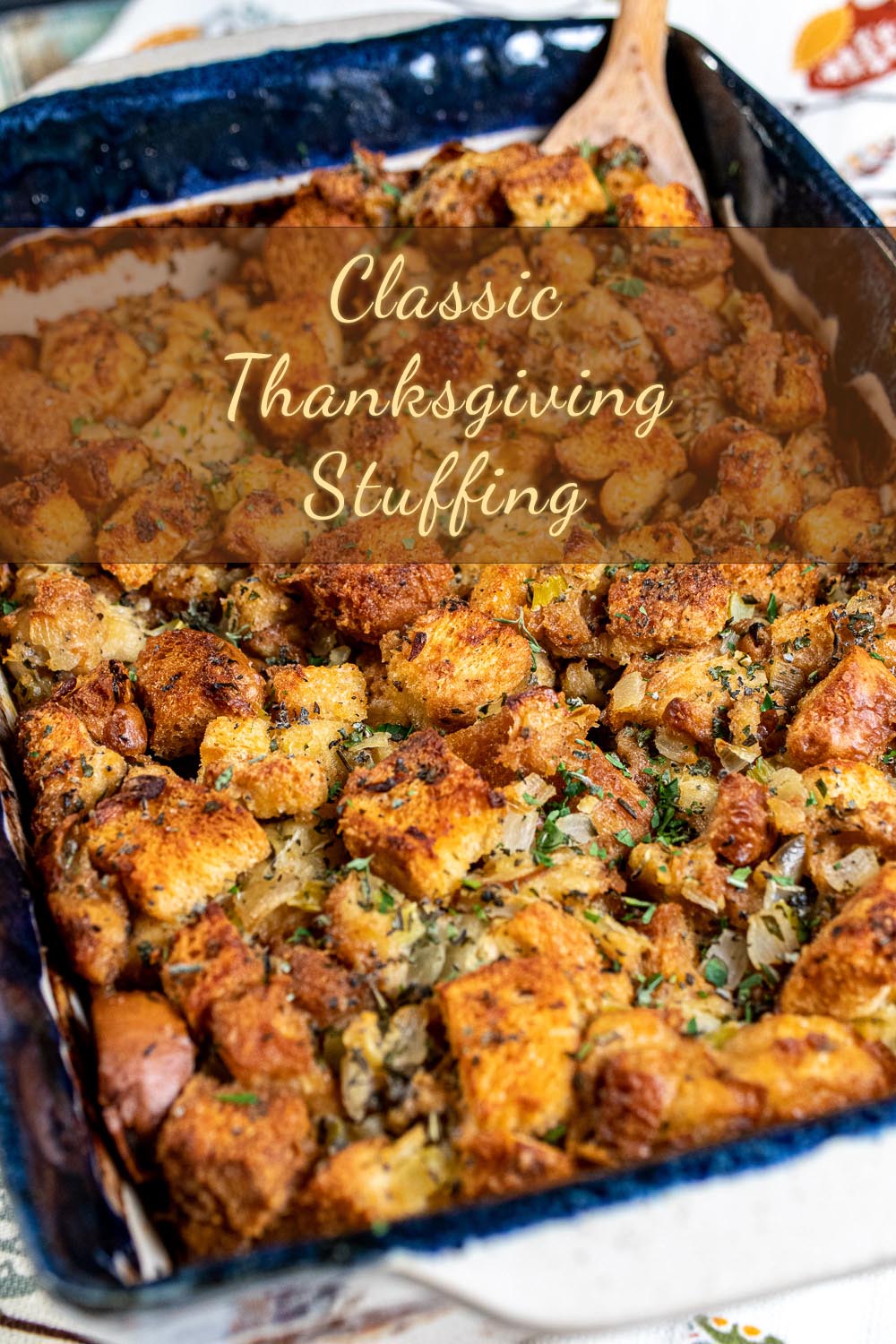


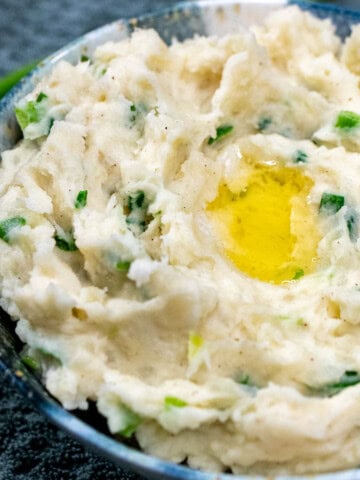
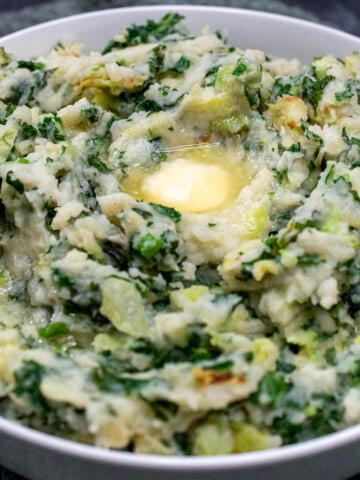
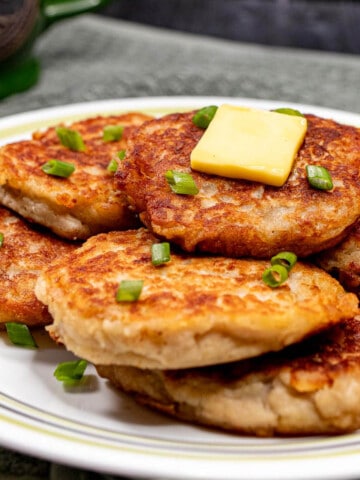
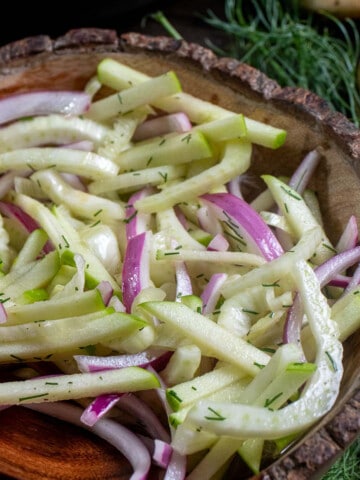
Comments
No Comments